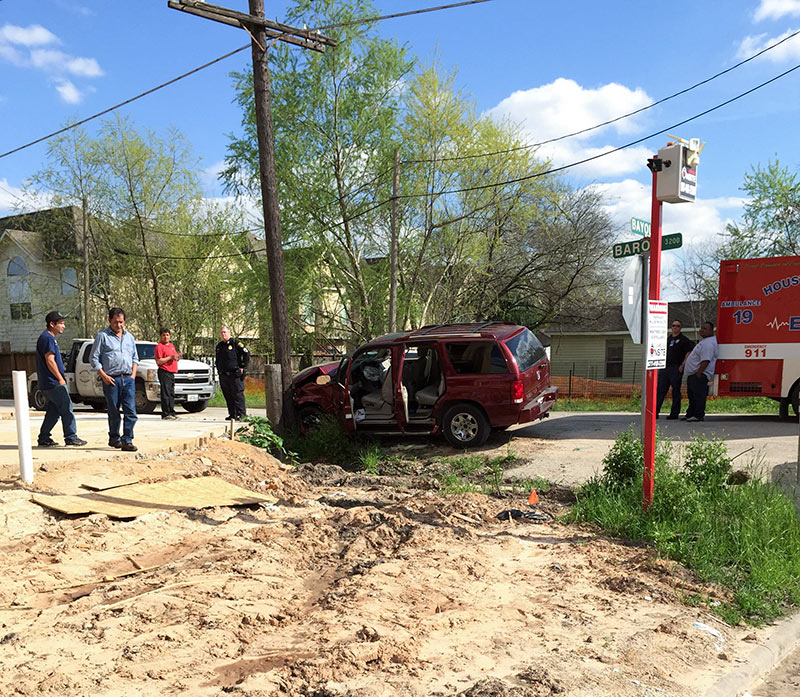 Here’s a first entry in what appears to be an impromptu, informal competition among Swamplot readers — to track down and photograph the narrowest findable gap between townhomes — and then speculate on what methods might be employed one day to repair or repaint the exteriors of the adjoining walls. The photo here shows a pair of townhomes lining Cage St. just north of Melva St. in the lower Fifth Ward, amidst a slew of similarly dimensioned homes in a larger complex. Think you can find a gap in the Houston area tighter than this one? Send pics and addresses to Swamplot’s tipline.
Here’s a first entry in what appears to be an impromptu, informal competition among Swamplot readers — to track down and photograph the narrowest findable gap between townhomes — and then speculate on what methods might be employed one day to repair or repaint the exteriors of the adjoining walls. The photo here shows a pair of townhomes lining Cage St. just north of Melva St. in the lower Fifth Ward, amidst a slew of similarly dimensioned homes in a larger complex. Think you can find a gap in the Houston area tighter than this one? Send pics and addresses to Swamplot’s tipline.
Photo: Swamplot inbox




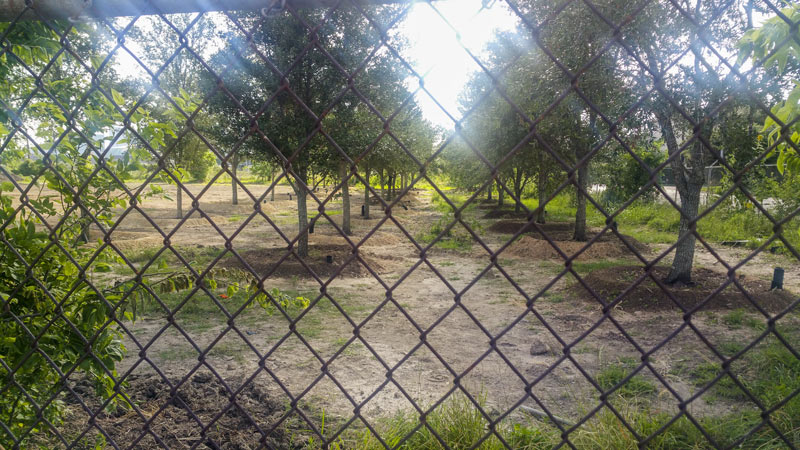

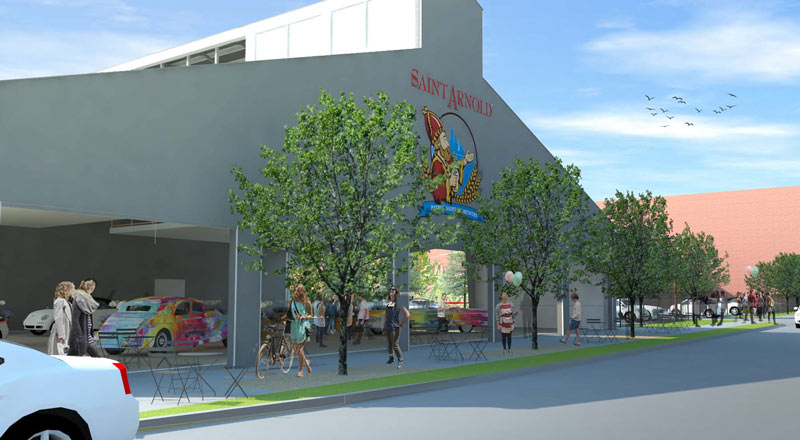
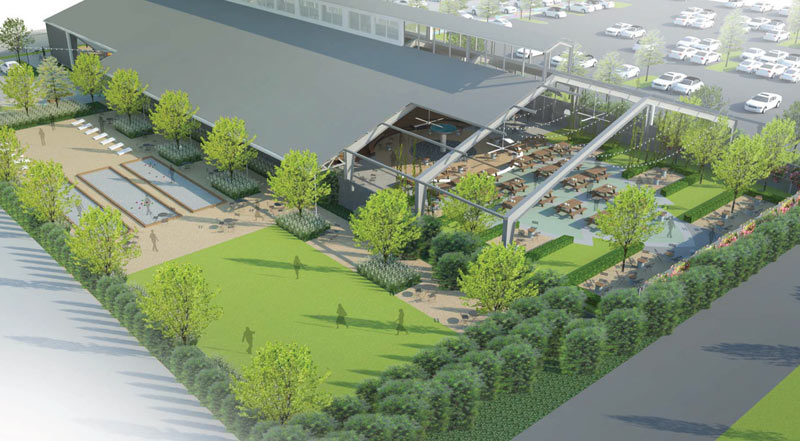

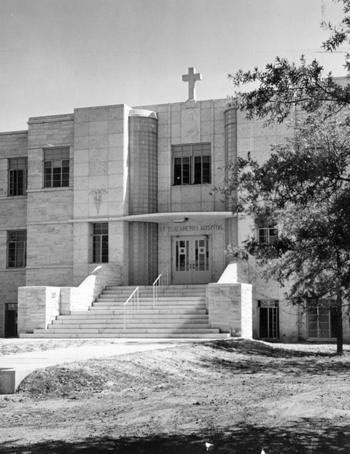

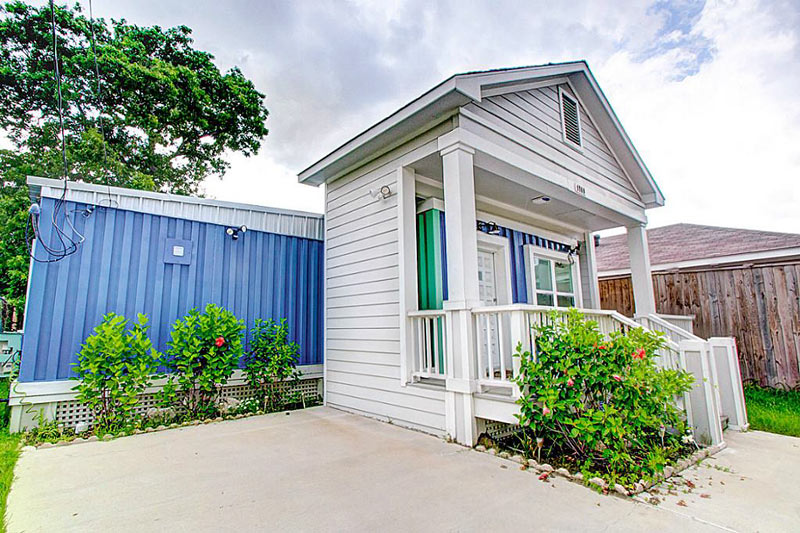
 A representative from Midway tells Swamplot that, while the company has been working on a trademark for the name Northbank Buffalo Bayou, it won’t be used for whatever the company is planning for the 136-acre former KBR site in Fifth Ward (which wasÂ
A representative from Midway tells Swamplot that, while the company has been working on a trademark for the name Northbank Buffalo Bayou, it won’t be used for whatever the company is planning for the 136-acre former KBR site in Fifth Ward (which was 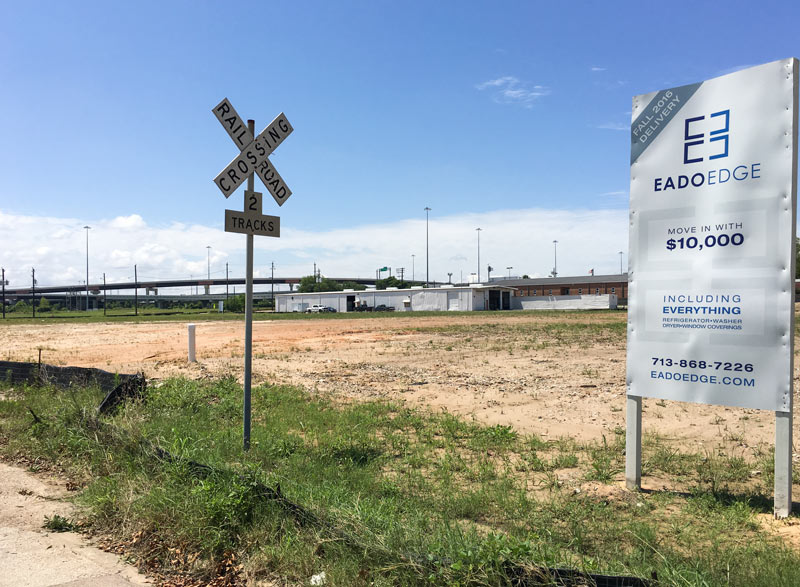

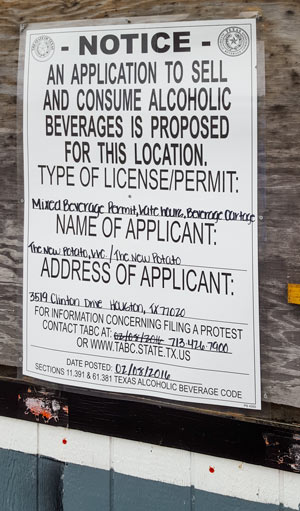
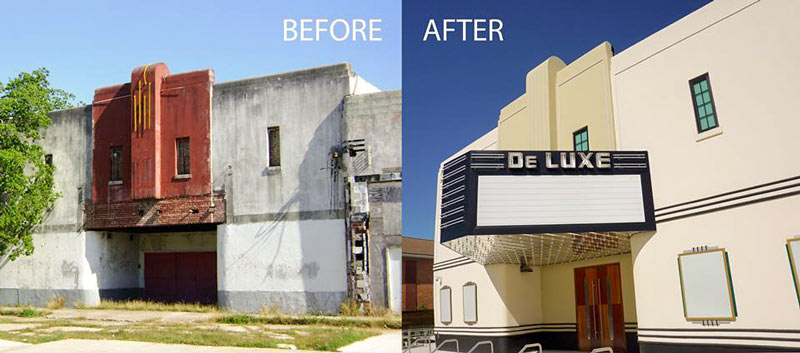

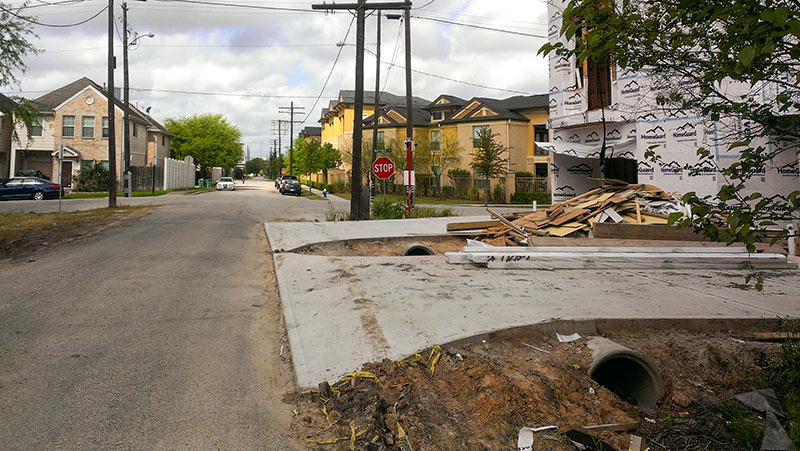 “Here’s how you get to this point.
(i) Neighborhood gets built with gravel streets, ditch drainage.
(ii) City goes in and widens most of the streets in the neighborhood in the 1960s. 40′ asphalt, curb and gutter. Baron St. misses out on the neighborhood-wide repave because it has a railroad track in the middle.
(iii) Railroad track gets abandoned, trackbed gets paved over, no one ever improves Baron.
(iv) Townhome developer comes in and wants to put in a driveway. Houston Infrastructure Design Manual says any culvert in City right-of-way has to be 24″ minimum. Developer’s engineer knows if he touches that old 60s curb inlet he’ll have to replace it to current spec, better to match the flowline and save eight or ten large. Culverts go in and look huge because 24″ on top of the existing flowline is above the crown of the road.
(v) Swamplot readers are confused because the 60s-era curb and gutter doesn’t match the existing right-of-way.” [
“Here’s how you get to this point.
(i) Neighborhood gets built with gravel streets, ditch drainage.
(ii) City goes in and widens most of the streets in the neighborhood in the 1960s. 40′ asphalt, curb and gutter. Baron St. misses out on the neighborhood-wide repave because it has a railroad track in the middle.
(iii) Railroad track gets abandoned, trackbed gets paved over, no one ever improves Baron.
(iv) Townhome developer comes in and wants to put in a driveway. Houston Infrastructure Design Manual says any culvert in City right-of-way has to be 24″ minimum. Developer’s engineer knows if he touches that old 60s curb inlet he’ll have to replace it to current spec, better to match the flowline and save eight or ten large. Culverts go in and look huge because 24″ on top of the existing flowline is above the crown of the road.
(v) Swamplot readers are confused because the 60s-era curb and gutter doesn’t match the existing right-of-way.” [